 W
WActinometers are instruments used to measure the heating power of radiation. They are used in meteorology to measure solar radiation as pyranometers, pyrheliometers and net radiometers.
 W
WThe Advanced Spaceborne Thermal Emission and Reflection Radiometer (ASTER) is a Japanese sensor which is one of five remote sensory devices on board the Terra satellite launched into Earth orbit by NASA in 1999. The instrument has been collecting data since February 2000.
 W
WAlbedo is the measure of the diffuse reflection of solar radiation out of the total solar radiation and measured on a scale from 0, corresponding to a black body that absorbs all incident radiation, to 1, corresponding to a body that reflects all incident radiation.
 W
WThe bidirectional reflectance distribution function is a function of four real variables that defines how light is reflected at an opaque surface. It is employed in the optics of real-world light, in computer graphics algorithms, and in computer vision algorithms. The function takes an incoming light direction, , and outgoing direction, , and returns the ratio of reflected radiance exiting along to the irradiance incident on the surface from direction . Each direction is itself parameterized by azimuth angle and zenith angle , therefore the BRDF as a whole is a function of 4 variables. The BRDF has units sr−1, with steradians (sr) being a unit of solid angle.
 W
WThe definition of the BSDF is not well standardized. The term was probably introduced in 1980 by Bartell, Dereniak, and Wolfe. Most often it is used to name the general mathematical function which describes the way in which the light is scattered by a surface. However, in practice, this phenomenon is usually split into the reflected and transmitted components, which are then treated separately as BRDF and BTDF.
 W
WA bolometer is a device for measuring the power of incident electromagnetic radiation via the heating of a material with a temperature-dependent electrical resistance. It was invented in 1878 by the American astronomer Samuel Pierpont Langley.
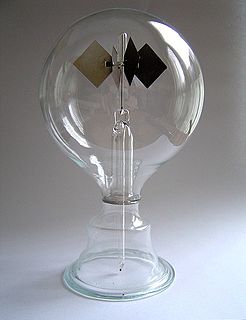 W
WThe Crookes radiometer consists of an airtight glass bulb containing a partial vacuum, with a set of vanes which are mounted on a spindle inside. The vanes rotate when exposed to light, with faster rotation for more intense light, providing a quantitative measurement of electromagnetic radiation intensity.
 W
WECOSTRESS is an ongoing scientific experiment in which a radiometer mounted on the International Space Station measures the temperature of plants growing in specific locations on Earth over the course of a solar year. These measurements give scientists insight into the effects of events like heat waves and droughts on crops.
 W
WEllipsometry is an optical technique for investigating the dielectric properties of thin films. Ellipsometry measures the change of polarization upon reflection or transmission and compares it to a model.
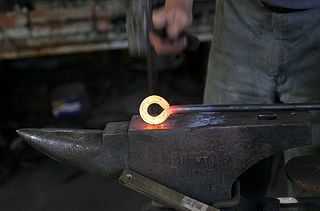 W
WThe emissivity of the surface of a material is its effectiveness in emitting energy as thermal radiation. Thermal radiation is electromagnetic radiation that may include both visible radiation (light) and infrared radiation, which is not visible to human eyes. The thermal radiation from very hot objects is easily visible to the eye. Quantitatively, emissivity is the ratio of the thermal radiation from a surface to the radiation from an ideal black surface at the same temperature as given by the Stefan–Boltzmann law. The ratio varies from 0 to 1. The surface of a perfect black body emits thermal radiation at the rate of approximately 448 watts per square metre at room temperature ; all real objects have emissivities less than 1.0, and emit radiation at correspondingly lower rates.
 W
WA Gardon gauge or circular-foil gauge is a heat flux sensor primarily intended for the measurement of high intensity radiation. It is a sensor that is designed to measure the radiation flux density from a field of view of 180 degrees. The most common application of Gardon gauges is in exposure testing of sample materials for their resistance to fire and flames.
 W
WISO 9846, Solar energy -- Calibration of a pyranometer using a pyrheliometer, is the ISO standard for the calibration of a pyranometer using a pyrheliometer.
 W
WThe kinetic inductance detector (KID) — also known as a microwave kinetic inductance detector (MKID) — is a type of superconducting photon detector first developed by scientists at the California Institute of Technology and the Jet Propulsion Laboratory in 2003. These devices operate at cryogenic temperatures, typically below 1 kelvin. They are being developed for high-sensitivity astronomical detection for frequencies ranging from the far-infrared to X-rays.
 W
WLangley extrapolation is a method for determining the Sun's irradiance at the top of the atmosphere with ground-based instrumentation, and is often used to remove the effect of the atmosphere from measurements of, for example, aerosol optical thickness or ozone. It is based on repeated measurements with a sun photometer operated at a given location for a cloudless morning or afternoon as the Sun moves across the sky. It is named for American astronomer and physicist Samuel Pierpont Langley.
 W
WLeslie's cube is a device used in the measurement or demonstration of the variations in thermal radiation emitted from different surfaces at the same temperature.
 W
WA microwave radiometer (MWR) is a radiometer that measures energy emitted at millimetre-to-centimetre wavelengths known as microwaves. Microwave radiometers are very sensitive receivers designed to measure thermal electromagnetic radiation emitted by atmospheric gases. They are usually equipped with multiple receiving channels in order to derive the characteristic emission spectrum of the atmosphere or extraterrestrial objects. Microwave radiometers are utilized in a variety of environmental and engineering applications, including weather forecasting, climate monitoring, radio astronomy and radio propagation studies.
 W
WA net radiometer is a type of actinometer used to measure net radiation (NR) at the Earth's surface for meteorological applications. The name net radiometer reflects the fact that it measures the difference between downward/incoming and upward/outgoing radiation from Earth. It is most commonly used in the field of ecophysiology.
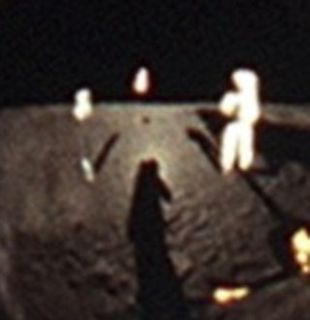 W
WThe opposition surge is the brightening of a rough surface, or an object with many particles, when illuminated from directly behind the observer. The term is most widely used in astronomy, where generally it refers to the sudden noticeable increase in the brightness of a celestial body such as a planet, moon, or comet as its phase angle of observation approaches zero. It is so named because the reflected light from the Moon and Mars appear significantly brighter than predicted by simple Lambertian reflectance when at astronomical opposition. Two physical mechanisms have been proposed for this observational phenomenon: shadow hiding and coherent backscatter.
 W
WPhase angle in astronomical observations is the angle between the light incident onto an observed object and the light reflected from the object. In the context of astronomical observations, this is usually the angle Sun-object-observer.
 W
WPhotometry, from Greek photo- ("light") and -metry ("measure"), is a technique used in astronomy that is concerned with measuring the flux or intensity of light radiated by astronomical objects. This light is measured through a telescope using a photometer, often made using electronic devices such as a CCD photometer or a photoelectric photometer that converts light into an electric current by the photoelectric effect. When calibrated against standard stars of known intensity and colour, photometers can measure the brightness or apparent magnitude of celestial objects.
 W
WA pyrgeometer is a device that measures near-surface infra-red radiation spectrum in the wavelength spectrum approximately from 4.5 μm to 100 μm.
 W
WA pyrheliometer is an instrument for measurement of direct beam solar irradiance. Sunlight enters the instrument through a window and is directed onto a thermopile which converts heat to an electrical signal that can be recorded. The signal voltage is converted via a formula to measure watts per square metre.
 W
WA pyrometer is a type of remote-sensing thermometer used to measure the temperature of distant objects. Various forms of pyrometers have historically existed. In the modern usage, it is a device that from a distance determines the temperature of a surface from the amount of the thermal radiation it emits, a process known as pyrometry and sometimes radiometry.
 W
WIn physics, and in particular as measured by radiometry, radiant energy is the energy of electromagnetic and gravitational radiation. As energy, its SI unit is the joule (J). The quantity of radiant energy may be calculated by integrating radiant flux with respect to time. The symbol Qe is often used throughout literature to denote radiant energy. In branches of physics other than radiometry, electromagnetic energy is referred to using E or W. The term is used particularly when electromagnetic radiation is emitted by a source into the surrounding environment. This radiation may be visible or invisible to the human eye.
 W
WThe Radiation Budget Instrument (RBI) is a scanning radiometer capable of measuring Earth's reflected sunlight and emitted thermal radiation. The project was cancelled on January 26, 2018; NASA cited technical, cost, and schedule issues and the impact of anticipated RBI cost growth on other programs.
 W
WA radiometer or roentgenometer is a device for measuring the radiant flux (power) of electromagnetic radiation. Generally, a radiometer is an infrared radiation detector or an ultraviolet detector. Microwave radiometers operate in the microwave wavelengths.
 W
WThe reflectance of the surface of a material is its effectiveness in reflecting radiant energy. It is the fraction of incident electromagnetic power that is reflected at the boundary. Reflectance is a component of the response of the electronic structure of the material to the electromagnetic field of light, and is in general a function of the frequency, or wavelength, of the light, its polarization, and the angle of incidence. The dependence of reflectance on the wavelength is called a reflectance spectrum or spectral reflectance curve.
 W
WThe solar constant (GSC) is a flux density measuring mean solar electromagnetic radiation per unit area. It is measured on a surface perpendicular to the rays, one astronomical unit (AU) from the Sun.
 W
WSpecific (radiative) intensity is a quantity used in physics that describes electromagnetic radiation. The present-day SI term is spectral radiance, which can be expressed in base SI units as W m−2 sr−1 Hz−1.
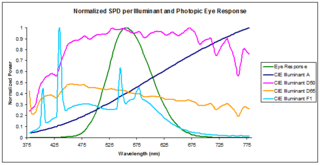 W
WIn radiometry, photometry, and color science, a spectral power distribution (SPD) measurement describes the power per unit area per unit wavelength of an illumination. More generally, the term spectral power distribution can refer to the concentration, as a function of wavelength, of any radiometric or photometric quantity.
 W
WSpectral sensitivity is the relative efficiency of detection, of light or other signal, as a function of the frequency or wavelength of the signal.
 W
WThe superconducting nanowire single-photon detector (SNSPD) is a type of near-infrared and optical single-photon detector based on a current-biased superconducting nanowire. It was first developed by scientists at Moscow State Pedagogical University and at the University of Rochester in 2001. The first fully operational prototype was demonstrated in 2005 by the University of Rochester, the National Institute of Standards and Technology (Boulder), and BBN Technologies as part of the DARPA Quantum Network.
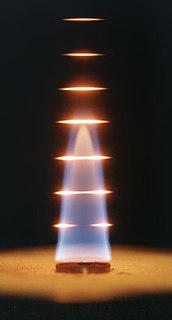 W
WThin filament pyrometry (TFP) is an optical method used to measure temperatures. It involves the placement of a thin filament in a hot gas stream. Radiative emissions from the filament can be correlated with filament temperature. Filaments are typically silicon carbide (SiC) fibers with a diameter of 15 micrometres. Temperatures of about 800–2500 K can be measured.
 W
WA transition-edge sensor (TES) is a type of cryogenic energy sensor or cryogenic particle detector that exploits the strongly temperature-dependent resistance of the superconducting phase transition.
 W
WTransmittance of the surface of a material is its effectiveness in transmitting radiant energy. It is the fraction of incident electromagnetic power that is transmitted through a sample, in contrast to the transmission coefficient, which is the ratio of the transmitted to incident electric field.